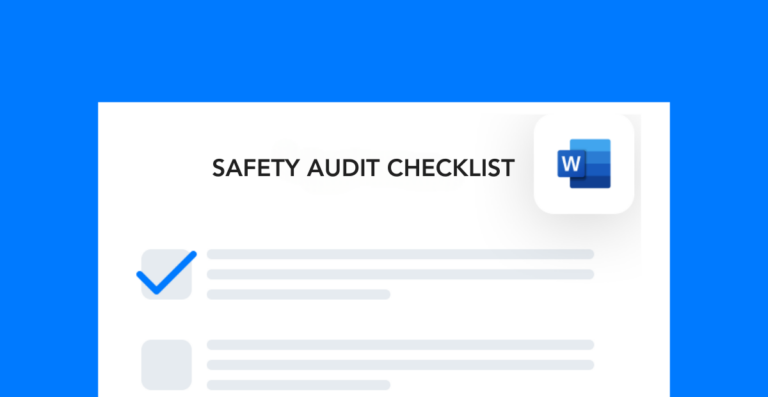One of the best ways to mitigate workplace accidents is by regularly conducting safety audits and inspections.
Having a comprehensive safety auditing and inspection program can go a long way in maintaining a safe and compliant operation.
Safety audits and inspections allow companies to ensure their organization is following regulations, meeting internal company goals, and will identify problems so that corrective actions can be implemented.
Differences between safety audits and safety inspections
Safety audits and safety inspections are two different processes that differ in scope and duration. Auditing involves accountability and will look at the big picture while inspections are narrower in focus and may be conducted as part of a required compliance obligation.
Safety audits evaluate the organization’s safety programs, policies, and practices to gauge its reliability and effectiveness. Safety audits are conducted less frequently but are more extensive than safety inspections.
Audits may take days to weeks to complete. Safety inspections examine the day-to-day processes and workspaces to determine if safeguards are in place, identify hazards, focus on hazard communication, and observe work practices to identify unsafe actions.
Safety inspections are more frequent and target a specific task, equipment, or work function. These may take a few minutes to a few hours.
Tips for safety auditing
When preparing for an audit, it is important to determine the scope and objectives. If applicable, review the previous audits to understand prior findings and recommendations.
Proper planning is necessary to identify the key components of whom, what, and where. Who will conduct the audit? This may be a single auditor or an audit team with specialized expertise.
What is the audit scope? Know what policies, procedures, and processes you will include as part of the audit. Where will be the audit focus? Targeted areas of the workplace can be designated as necessary.
Lastly, decide how best to capture the audit information. Some auditors use a checklist while others create a narrative report by taking notes of observations. It’s up to the auditor and organization to decide which method works best.
Conducting the audit
Audits are meant to assess and improve the organization’s safety policies, procedures, and processes, which are the foundation of employee safety.
You can use audits to monitor progress toward safety goals. A review of the written plans, procedures, and other documents will assist the auditor in developing a baseline to compare with what is occurring.
The review will allow the auditor to look for strengths and weaknesses present in the safety program. Communicating with the managers and employees will provide additional insight into how well the company’s safety program is being executed and understood by personnel.
Report findings and make recommendations
After finishing your audit is complete, compile all notes and observations into a report that summarizes your findings. Be sure to notate who conducted the audit, areas they audited, and people they interviewed.
A great report will be concise and objective, reporting both the positive and negative findings exposed during the audit. To conclude the audit report, provide a complete list of recommendations and areas of improvement.
Tips for safety inspections
In my experience, there are so many different variables that you could focus on during your reviews. It’s important to remember your reason for conducting an inspection in the first place. Having a clear focus will ensure you collect the most relevant information possible. Here are some tips for getting the most out of your inspections.
Scope and frequency
Determine what the safety inspection will cover and how often the inspections need to occur. The scope of the safety inspections may include a variety of methods: general safety tour to inspect the workplace, safety surveys or sampling to examine specific activities/processes / areas, or incident inspections (investigating near miss/incident / accident).
The frequency can depend on several factors: guidelines from a regulatory agency, incident/accident frequency rate, introduction of new processes/equipment, number of shifts, number of man-hours worked, or complexity of operation (number, size, and potential risk of different operations or equipment).
You need to consider safety regulations and standards when developing an inspection checklist or when preparing to observe conditions. Similar to safety audits the inspector must decide whether to use checklists or make notes of observations.
Conducting the inspection
Some inspections are scheduled and others aren’t. For scheduled inspections, ensure the department personnel is aware so they are prepared to avoid disruption to the workflow.
For unscheduled inspections, ensure that personnel is aware that unscheduled inspections are a part of the safety program so there won’t be surprises. During the inspection, the safety inspector may find hazardous conditions or acts that you should correct on the spot.
In these cases, you may need to shut down operations until you fix the issue. Communicate the immediate concern and document it in your final inspection report. For other issues that don’t present an immediate hazard, document, schedule, and track your corrective actions to completion.




